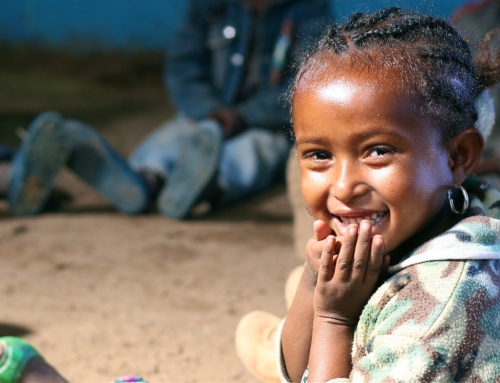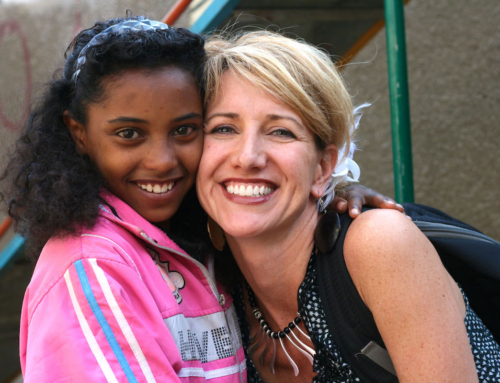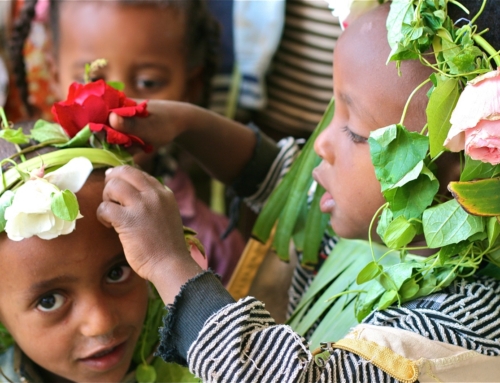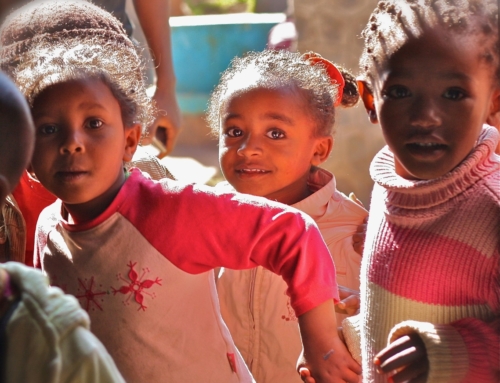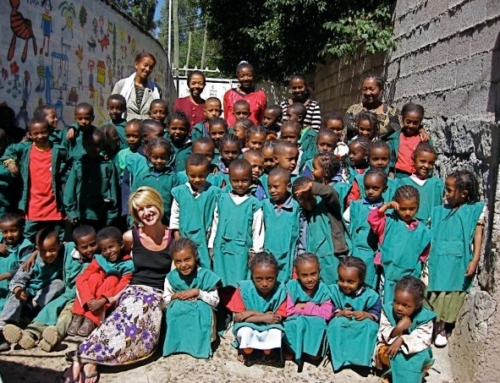I will never forget the day we went to Dukum, and it all started with a flat tire…
It was just before noon. My friend, Melissa Timmer and I were joined by some of Tesfa’s best staff. We had packed our mini bus full of art supplies and headed towards the small town of Dukum, which was supposed to be about a 45 minute drive from Addis Ababa, Ethiopia’s capital city.
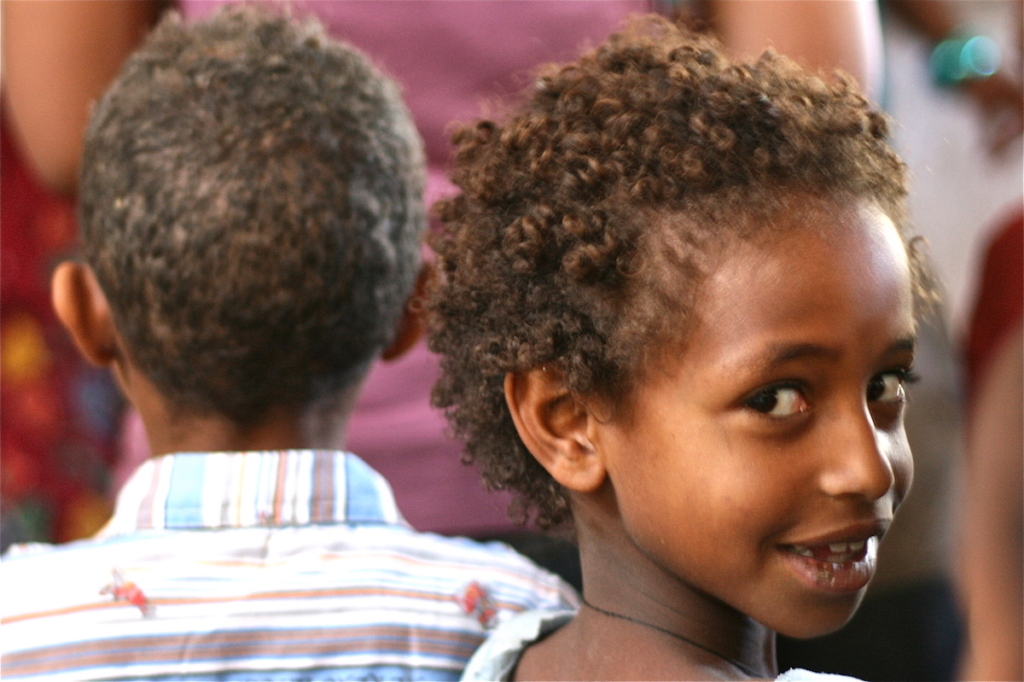
As soon as we reached the city’s outskirts, our driver slowed down suddenly and veered towards the side of the road. One of our tires had gone flat. During my six years of working in Ethiopia, I’d witnessed this sort of misfortune fall on many others who braved these unpredictable, rough roads…but it had never happened to me. We were going to be late… And what if we didn’t get the full two hours we’d been allotted to paint a mural–with students who had never even had an art class before?
Five impressively short minutes later, we were on the road again. I needn’t have worried. I barely had time to get out and take pictures of the “tragedy” before our trusty driver had fixed us up, as if he’d done this sort of thing a million times before…
A monumental change had happened in Ethiopia since my last visit a year ago. For the first time in its history, the government was providing preschools and kindergartens, where only NGO like Tesfa, and expensive private schools had before. This recent development has forced Tesfa to evolve, as we’ve started re-evaluating strategies to figure out how we can continue to best serve this age group. Because the new government programs seemed less than ready to handle the responsibility of educating children during these crucial years of their development.
And that is how I found myself headed to a government-run school in Dukum that day. The school was part of a pilot program, where Tesfa partners with the government to help improve the quality of education it provides. So, it was with curiosity and apprehension that I entered that huge, crowded Ethiopian public school.
The children we met there were as sweet and adorable as any. Their big eyes sparkled with anticipation and wonder when they looked at us–the foreigners carrying such a complex rainbow of colors. We fell in love with them right away, which can be an occupational hazard when doing this kind of work.
Like the flat tire that kicked off our journey, there were complications from the start. The children only spoke Oromo, but our translators only spoke Amharic and English. We were losing precious art class time, so we had to think quickly. One of the teachers there spoke Oromo and Amharic (but not English, of course) and agreed to stand in as a second translator. As I watched our words turn from English to Amharic to Oromo and back, I wondered what all might be lost in these interpretations, but we pushed on.
Fortunately for us, art is its own language. The students and I were able to create together, and that was the important thing. It filled me with such joy to witness the children working with paint for the very first time. Like all children, they dove in with an uninhibited gusto that always makes me smile. Unlike most adults, children don’t really care if they’re “doing a good job” or not, they simply enjoy the process, which is something that never ceases to inspire me.
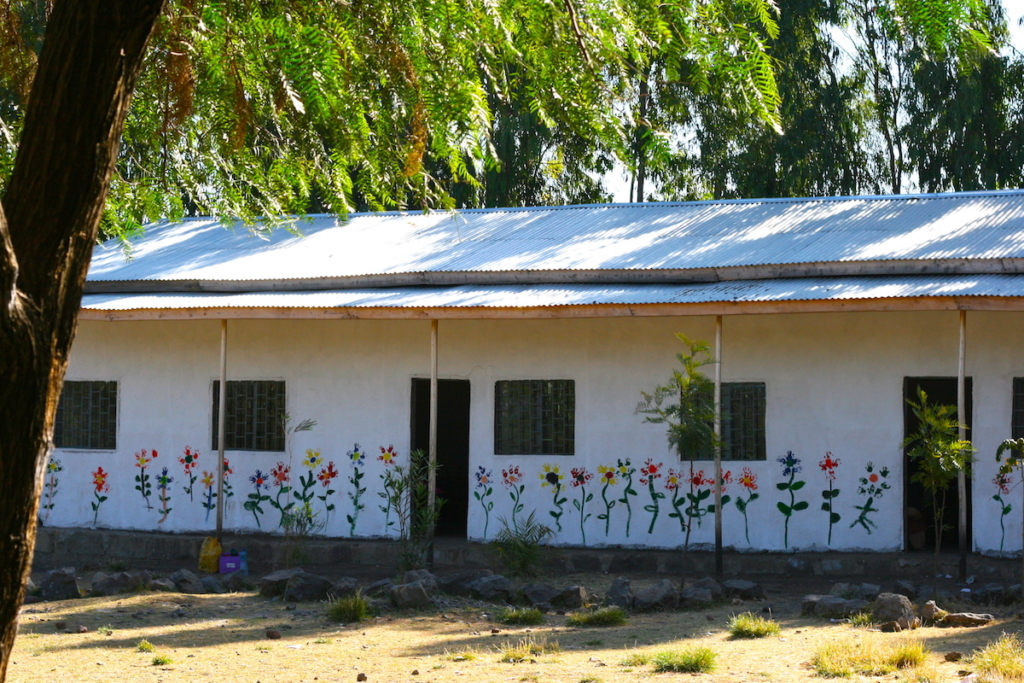
After the children had warmed up with individual paper paintings, it was time for us to move outside and create a mural on the school. The children were confused at first, never having done anything like this, but after they smashed their little hands into the paint and stamped them on the wall for a while, they seemed to get the hang of things. I watched bright smiles flash over their faces as they began to discover that they were creating flowers with their little hand prints.
It wasn’t long before we were surrounded by the whole school. The older kids soon started to push in and were getting a bit aggressive, and the other teachers were of little help in keeping them out of the way and out of our supplies. They seemed to be just as fascinated with our project as the older students were, so I suppose they must have forgotten their supervising duties for the moment.
Everyone seemed very pleased with the children’s mural when they finished. The headmaster was especially enthusiastic. They all asked us when we’d be back, and I would’ve loved to answer, “next week!” but I couldn’t. Our time in Ethiopia was limited, and we still had many places we needed to go.
For now, I’m comforted by the fact that 65 kids now know that such colorful paint exists, and that they can create art with it. They’ve created a permanent reminder of this lesson, and that mural is now the brightest part of the school. I had done what I’d gone there to do, and I left with a huge smile on my face, and a refreshed determination to continue helping them in the ways I can–even with my limited staff and home on the other side of the world from them.


